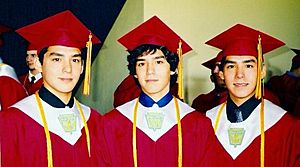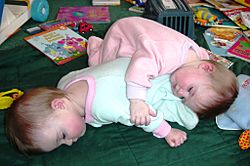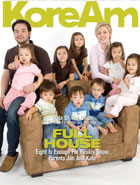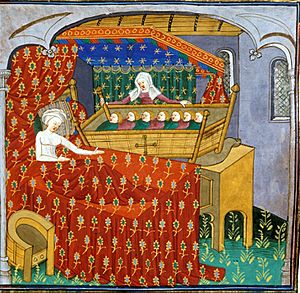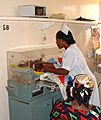Multiple birth facts for kids
A multiple birth happens when a woman gives birth to more than one child at the same time. This is different from having one baby at a time. The number of babies born together gives them special names. For example, two babies are twins, three are triplets, and four are quadruplets. Sometimes, a woman can even give birth to eight babies at once!
The chance of having a multiple birth goes up if artificial insemination (a special medical procedure to help people have babies) is used.
Contents
What Do We Call Multiple Births?
Here are the terms used for different numbers of babies born together:
- Two babies – twins
- Three babies – triplets
- Four babies – quadruplets
- Five babies – quintuplets
- Six babies – sextuplets
- Seven babies – septuplets
- Eight babies – octuplets
- Nine babies – nonuplets
- Ten babies – decuplets
Sometimes, we also talk about how the babies are related genetically:
- Monozygotic – This means the babies came from a single fertilized egg that split. Identical twins are an example of this.
- Polyzygotic – This means the babies came from two or more separate fertilized eggs.
- Dizygotic – Typically two babies from two separate eggs. Fraternal twins are an example.
- Trizygotic – Three or more babies from three separate eggs.
Human Multiple Births
For a single baby, a typical pregnancy lasts about 38 weeks. But for multiple births, the pregnancy is usually shorter. For twins, it's about 36 weeks. For triplets, it's around 32 weeks, and for quadruplets, it's about 30 weeks.
Because they are born earlier, babies from multiple births might face more health risks. They might be very small or need special care. Before the 1900s, it was very rare for more than four babies from a multiple birth to survive.
In recent years, the number of multiple births has increased. This is partly because more people are using assisted reproductive technology to help them get pregnant. For example, in the United States by 2011, over a third of twin births and most triplet births were due to these technologies.
Twins
Twins are the most common type of multiple birth in humans. They can be identical (monozygotic) or fraternal (dizygotic). Identical twins look exactly alike because they came from one egg that split. Fraternal twins are like any other siblings; they might look similar, but they are not identical.
Triplets
Triplets are much less common than twins. Identical triplets are very rare. They happen when a single fertilized egg splits into two, and then one of those two parts splits again. This creates three identical babies.
In 2015, only four sets of identical triplets were reported in the U.S. This shows how rare they are, about one in a million pregnancies!
Quadruplets
Quadruplets are even rarer than twins or triplets. By 2007, there were about 3,500 sets of quadruplets known worldwide. Only about 70 sets of these were all identical. Many sets of quadruplets are a mix of identical and fraternal siblings. For example, you might have three identical and one fraternal, or two identical and two fraternal. In Britain, quadruplets are sometimes called "quads."
Quintuplets
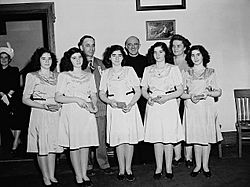
Quintuplets happen naturally in about 1 out of every 55 million births. The first quintuplets known to survive past infancy were the Dionne Quintuplets. They were five girls born in Canada in 1934. In North America, quintuplets are often called "quints."
Sextuplets
The Walton sextuplets were born in Liverpool, England, in 1983. They were the world's first all-female sextuplets to survive. Another famous set of sextuplets are the Gosselin sextuplets, born in Pennsylvania in 2004.
Very High-Order Multiple Births
In 1997, the McCaughey septuplets were born in Iowa. Seven babies were born at once! Even eight babies have been born alive. The first recorded set of octuplets (eight babies) was to the Chukwu family in Texas in 1998. One baby sadly passed away, but seven survived. In 2009, another set, the Suleman octuplets, were born in Bellflower, California. All eight of these babies were still alive shortly before their fifth birthday.
Cultural Aspects of Multiple Births
Different cultures have different ideas about multiple births. Some see them as a good sign, while others might see them as a bad sign.
The ancient Mayan people thought twins were a blessing. They were fascinated by how two bodies could look so much alike. Mayans believed that twins were one soul that had split into two.
In Ancient Rome, there was a famous legend about twin brothers, Romulus and Remus, who founded the city of Rome. Because of this, having twin boys was seen as a blessing. However, having twin girls was sometimes seen as unlucky. This was because families would need to pay for two expensive dowries (money or property given by the bride's family) at about the same time.
In Greek mythology, there are stories of fraternal twins who had different fathers. For example, Castor and Polydeuces, and Heracles and Iphicles. One twin was the son of the god Zeus, and the other was the son of their mother's human husband. This idea, where twins have different fathers, is called superfecundation and appears in other myths too.
See also
 In Spanish: Nacimiento múltiple para niños
In Spanish: Nacimiento múltiple para niños
- Biological reproduction
- Conjoined twins
- Feodor Vassilyev
- Half a Dozen Babies, a 1999 drama film about the 1993-born Dilley sextuplets
- List of multiple births
- List of twins
- Only child
- Quints, a Disney Channel movie about a teenage girl becoming the older sister to quintuplets
- Three Identical Strangers
- Twin
Images for kids


